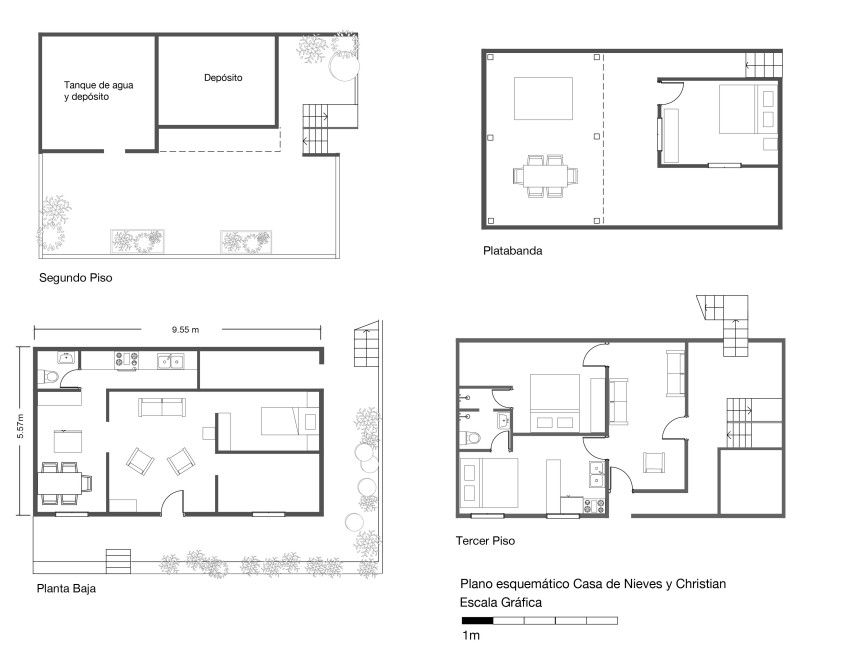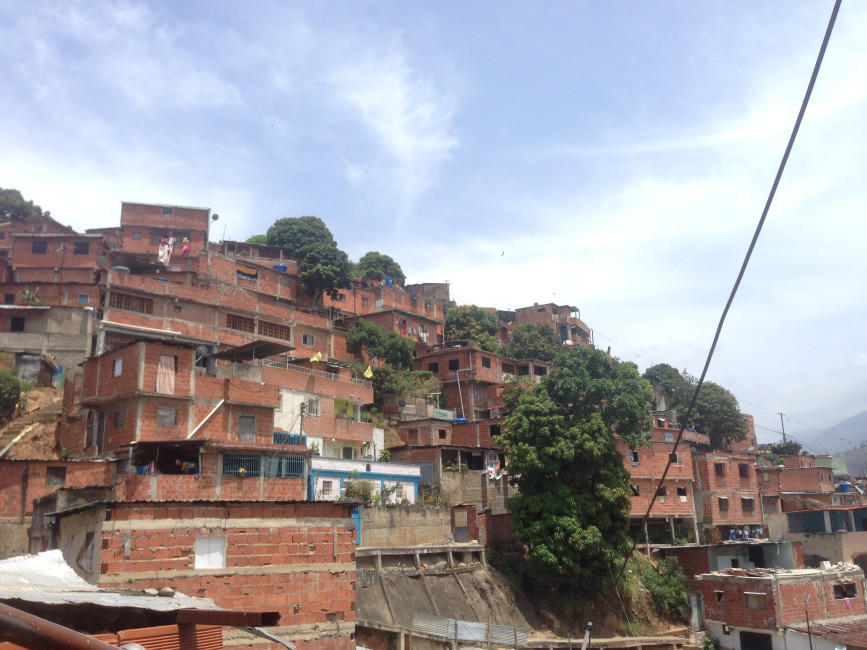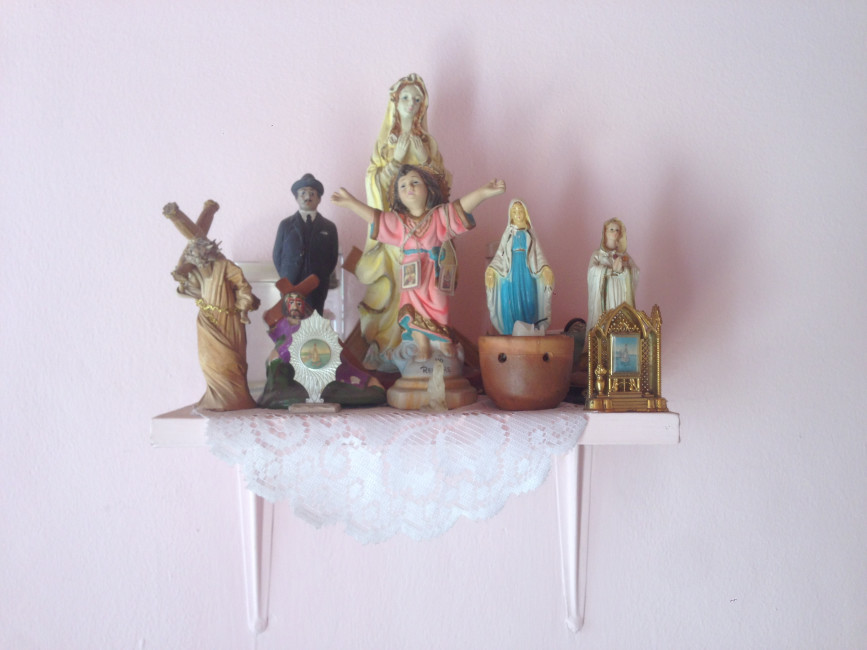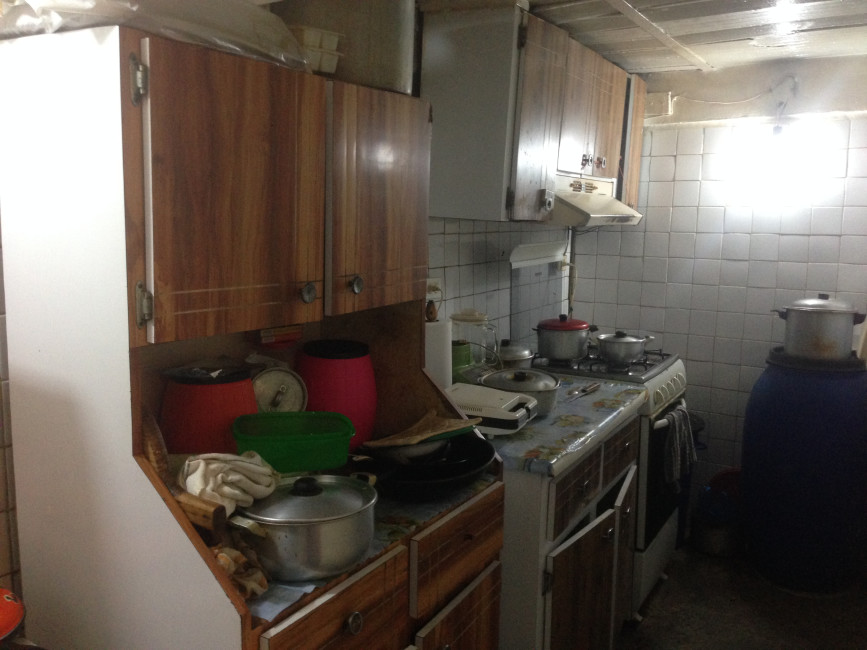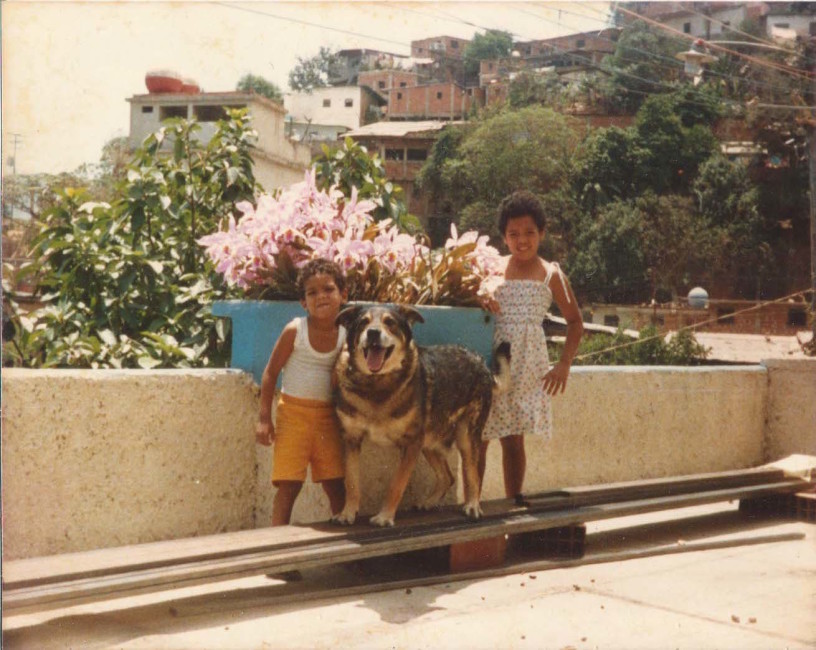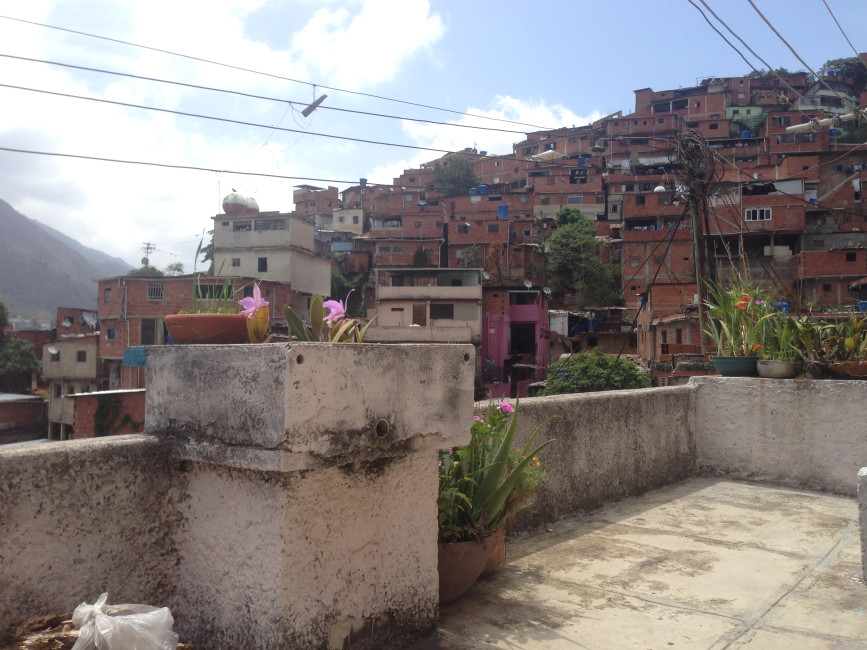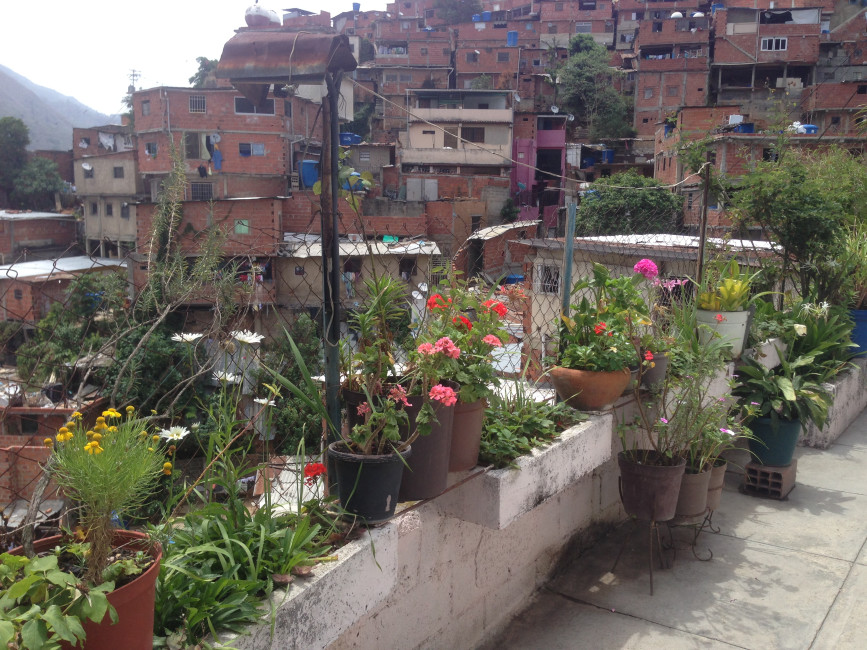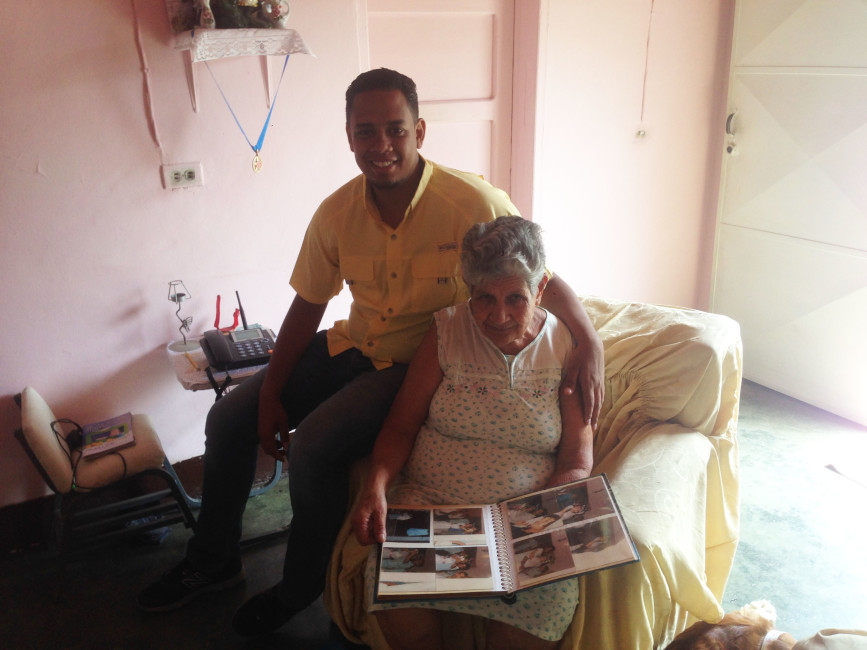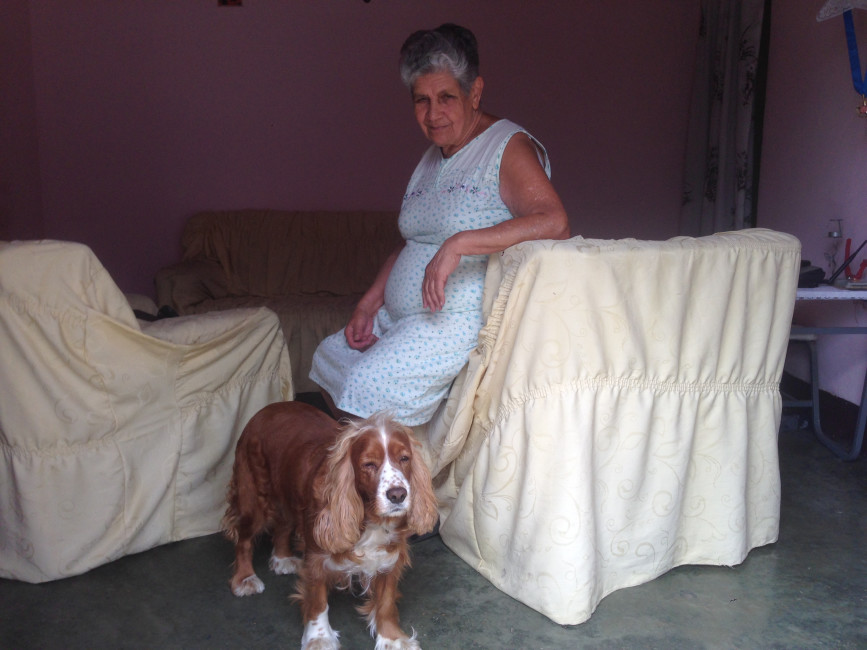| Home of Christian and his grandmother Nieves Christian’s mother was shocked when her 21 year-old son decided to return to the slums in Caracas. He was returning to his childhood home after living for 10 years in the state of Aragua. Three years after Christian moved, his younger brother Daniel decided to come a long as well. Both of them are law students at Universidad Central de Venezuela. They grew up with their parents in Petare, at their grandmother Nieves’ house. When Christian was 11, his family moved to a suburb in the city of Maracay. There he finished high school and began studying computer technology in La Victoria. However, he always wanted to study law, so he returned to Caracas to fulfill that dream. Christian spent his childhood and later returned to a house that is pink and blue. The house stands out in the mist a landscape of dense houses made out of orange clay block. The house was built about 45 years ago by his grandparents, who lived in La Huerta (on the road to Guarenas). According to grandma Nieves: “When we moved here, the land was a cliff filled with cane and banana plants. We bought a wooden hut, which cost 500 bolivars at that time. My husband earned 105 bolivars weekly, and that was enough for all.” It took about 5 years to replace the wooden hut with a blockhouse. First, they built the perimeter and then the internal divisions. They started with septic sediment, and then they made the sewage pipes. Saturdays and Sundays were dedicated to carry construction materials from the bottom of the slum all the way up to their house. Nieves, with the help of some boys in the area, carried the materials up the stairs of the slum. Almost a year has gone by since her husband passed away. He built everything and did not like changes to be made to their home. He painted it pink in 1995 and never changed the color. The home of Ms. Nieves has four floors. The ground floor includes the space of the original wooden house and has two rooms, a bathroom, kitchen and dining room. Ms Nieves keeps a flower-filled balcony, which she cares for herself; gardening has always been her hobby. Then there are three additional floors built for her children. The second floor is just a deposit with a large terrace, which was full of orchids until a plague destroyed most of them. The third floor is where her daughter and grandson Daniel live. The fourth floor is a rooftop; it has a single room that belongs to Christian. Christian tells us his other grandmother also lived near by – family celebrations were what he missed most when he had to move away. He recalls that as a child, he was always forbidden to reach the road without adult supervision, “living in this area prohibited us from some liberties. We were not some of those kids who spent their childhood playing outside. Our playground was the house. When we moved to Maracay, we were suddenly allowed to play in front of the house with our neighbors without any surveillance. It was like going from a prison to freedom. Look, this is the space we used to ride our bicycle (he points to the living room of the house), over there (Maracay) we could ride around the streets without any problem. When we came back (to the slums) I was not thinking about wanting to play in the streets. I was already focused on studying. Some friends offered allowing me to move in with them. But this was my home, I left and I returned.” Christian now feels more comfortable in Petare than in Maracay. However, he recognizes that conditions were better over there, “we lived in an urban area where there are services and you can reach near the entrance of the house with a car. It is a planned house while this one, well… what is truly complicated is getting to the house.” At night, when he gets off the bus, he fears becoming yet another victim of local urban violence. He already knows of a band of criminals that hides behind an alley on the path from the station to his home. Finally, we asked Mrs. Nieves which part of her house she would take if she had to move. Without hesitation she answered, “I would take it all!” Link: http://iqlatino.org/2015/de-vuelta-al-barrio/
Imagen01: Nieves House front view Imagen02: The altarpiece Santa Nieves Imagen03: Kitchen Imagen04: The second floor terrace when it was full of orchids and the neighborhood had green areas. Imagen04b: The terrace today Imagen05: The garden of plants Imagen06: Christian and Nevis watching the old albums Imagen07: Nieves and her dog |
